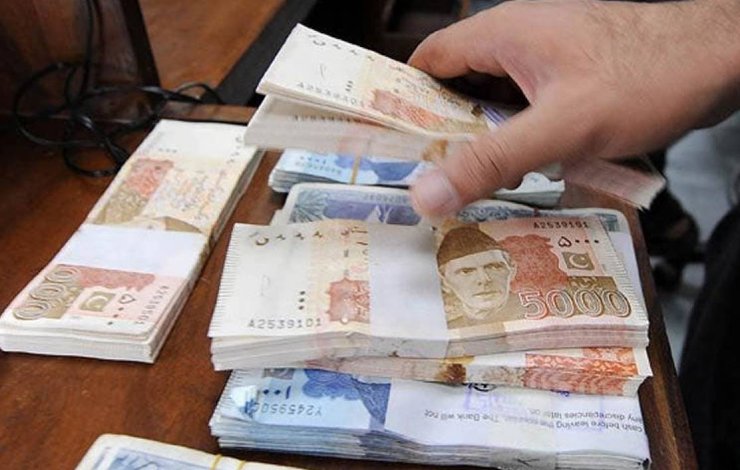Economic achievements of PM Imran Khan-led PTI govt (Part III)
During the PTI regime, a special package was given to the construction sector. The package included 2,125 projects that brought a total investment of Rs493 billion in the construction sector.

ISLAMABAD: Prime Minister Imran Khan-led Pakistan Tehreek-e-Insaf (PTI) government has made achievements and failures on different fronts during the past 3.5 years while continuing its journey to complete the tenure.
The incumbent government led by Pakistan Tehreek-e-Insaf (PTI) under the leadership of PM Imran Khan witnessed many achievements on the economic front that are given below:
Construction sector
During the PTI regime, a special package was given to the construction sector. The package included 2,125 projects that brought a total investment of Rs493 billion in the construction sector.
Rs30 billion had been allocated for the New Pakistan Housing Scheme under which the poor and middle class across the country were given opportunities to fulfil the dream of owning a house. It enabled certain segments to return the loans from the savings of their rental expenditures.
The construction sector was given the status of an industry. A fixed tax facility had been introduced by the Federal Board of Revenue (FBR) for the construction sector which covers both residential and commercial projects.
Through the move, the fixed tax will be levied per square foot or per square yard for facilitating the people to avoid the increased taxes of residential and commercial projects, reducing the cash flow problems of builders.
For the construction sector, provincial and municipal taxes and duties in urban areas were combined at the rate of 2%. Through the move, investors and builders have been saved from paying hefty taxes and duties besides facilitating them not to keep visiting concerned offices again and again.
Economic achievements of PM Imran Khan-led PTI govt (Part II)
The PTI government had waived Section 111 of the Income Tax Ordinance for the construction sector besides allowing not to mandatory disclose the sources of income.
Interest rates have been kept to a minimum for the construction sector. Moreover, the interest rate will be further reduced in 2022 for the construction and purchase of houses.
The Competition Commission of Pakistan (CCP) had conducted an inquiry against cement price-fixing and affecting the competitive environment for consumers. The inquiry was made public which created a competitive trend in cement prices.
Facilities for construction sector
The Federal Excise Duty was reduced by Rs100 to Rs75 on the cement sack by the PTI government, whereas, the cement production was increased in the FY2021.
48 million tonnes of cement was used locally while 9 million tonnes of cement was exported and the growth rate in the cement sector was 20% and its use locally increased by 82%.
During the PTI era, the government set an initial target of building five million houses in five years. Thus, by constructing 500,000 houses every year, the resources worth Rs2,0000 billion were fixed for the sector.
The country witnessed the demand for additional production of 20 tonnes of cement for the construction of single-storey houses. An additional demand of 15 tonnes of steel production was created for the construction of 500,000 houses annually.
The increase in demand for construction materials in the country was seen for the major projects under the flag of the China-Pakistan Economic Corridor (CPEC) including Kashmir Hyro, ML-1 railway project, Diamer Bhasha Dam, Ravi Riverfront Urban Development Project and others.
Following the development of the sector by constructing 500,000 houses annually and big mega projects, the pace of economic growth has accelerated besides the creation of the employment and promotion of other industries.
During the PTI era, support packages were introduced for small and medium enterprises (SMEs). The production cost was reduced for small steel mills which gave a direct benefit to the construction sector.
Improvements in agriculture, livestock sector
The agricultural development of any country can be gauged from the sale of fertilizers there. In 2021, the sales of fertilizers stood at 6.3 million tonnes, the highest since 2009. Similarly, the sales of DAP fertilizer during this period stood at 1.3 million tonnes. Due to better use of fertilizers, wheat production stood at 27.3 million tonnes, rice production reached 8.4 million tonnes and maize production reached 8.5 million tonnes.
The PTI government increased the wheat support program from Rs1,800 to Rs 2,200 per maund for the relief of farmers. The support price of rice was also kept at Rs2,200 per maund. Thus, 60 per cent of the rural population benefited and their income was increased.
Some critics have blamed the rising support prices for the rise in inflation. However, after analyzing the global prices, better production in Pakistan has helped stabilise the prices and reduced the need to import expensive foreign goods. Globally, food consumption commodities have increased from 43% to 140%.
The price of palm oil in the world market rose by 232% up to $1660 per tonne, whereas, the price of sugar rose by 87% globally, wheat 109% and cotton 117%.
In contrast to the global level, the price of locally grown wheat in Pakistan increased by 28% and sugar 8% which prevent the consumers from the real impact of global inflation.
During the previous governments from 2008 to 2018, the prices of wheat increased by 170% and sugar by 92%.
The government took another important step for the agricultural sector by reducing Gas Infrastructure Development Cess (GIDC) from Rs1,600 to Rs400 per sack for the fertilizer factories. The fertilizer factories received profits worth Rs417 billion following the move besides providing low-cost fertilizers for the agricultural sector.
During the PTI regime, its Punjab government launched the Kisan Card, under which loans and subsidies were provided to the farmers. It was made transparent through the online method.
Alongside agriculture, the livestock sector was also developed. The number of cows and bullocks in increased to 44 million. Similarly, the number of buffaloes reached 33.7 million and the milk production increased from 20 billion litres to 34 billion litres.
According to the Asian Development Bank (ADB), Pakistan lacked safe and cold storage facilities for milk, which causes a 15 to 20 per cent loss of milk stocks.
The government is working to reduce milk wastage through consultation with stakeholders and ensuring the provision of necessary infrastructure.



